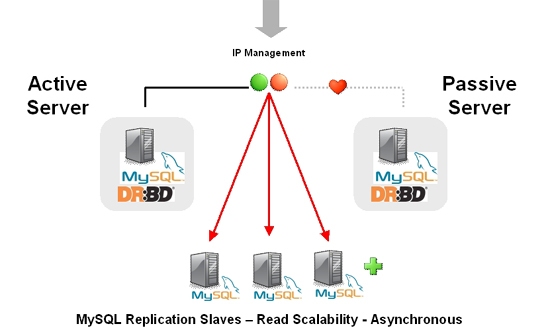In the following section, we provide answers to questions that are most frequently asked about MySQL Replication Scale-out.
Questions
Questions and Answers
B.14.4.1: What is the difference between MySQL Cluster and DRBD?
Both MySQL Cluster and DRBD replicate data synchronously. MySQL Cluster leverages a shared-nothing storage architecture in which the cluster can be architected beyond an Active/Passive configuration. DRBD operates at a much lower level within the “stack”, at the disk I/O level. For a comparison of various high availability features between these two options, please refer to Chapter 14, High Availability and Scalability.
B.14.4.2: What is the difference between MySQL Replication and DRBD?
MySQL Replication replicates data asynchronously while DRBD replicates data synchronously. Also, MySQL Replication replicates MySQL statements, while DRBD replicates the underlying block device that stores the MySQL data files. For a comparison of various high availability features between these two options, please refer to the high availability comparison grid, Chapter 14, High Availability and Scalability.
B.14.4.3: How can I combine MySQL Replication scale-out with DRBD?
MySQL Replication is typically deployed in a Master to many Slaves configuration. In this configuration, having many Slaves provides read scalability. DRBD is used to provide high-availability for the Master MySQL Server in an Active/Passive configuration. This provides for automatic failover, safeguards against data loss, and automatically synchronizes the failed MySQL Master after a failover.
The most likely scenario in which MySQL Replication scale-out can be leveraged with DRBD is in the form of attaching replicated MySQL “read-slaves” off of the Active-Master MySQL Server. Since DRBD replicates an entire block device, master information such as the binary logs are also replicated. In this way, all of the slaves can attach to the Virtual IP Address managed by Linux Heartbeat. In the event of a failure, the asynchronous nature of MySQL Replication allows the slaves to continue with the new Active machine as their master with no intervention needed.
